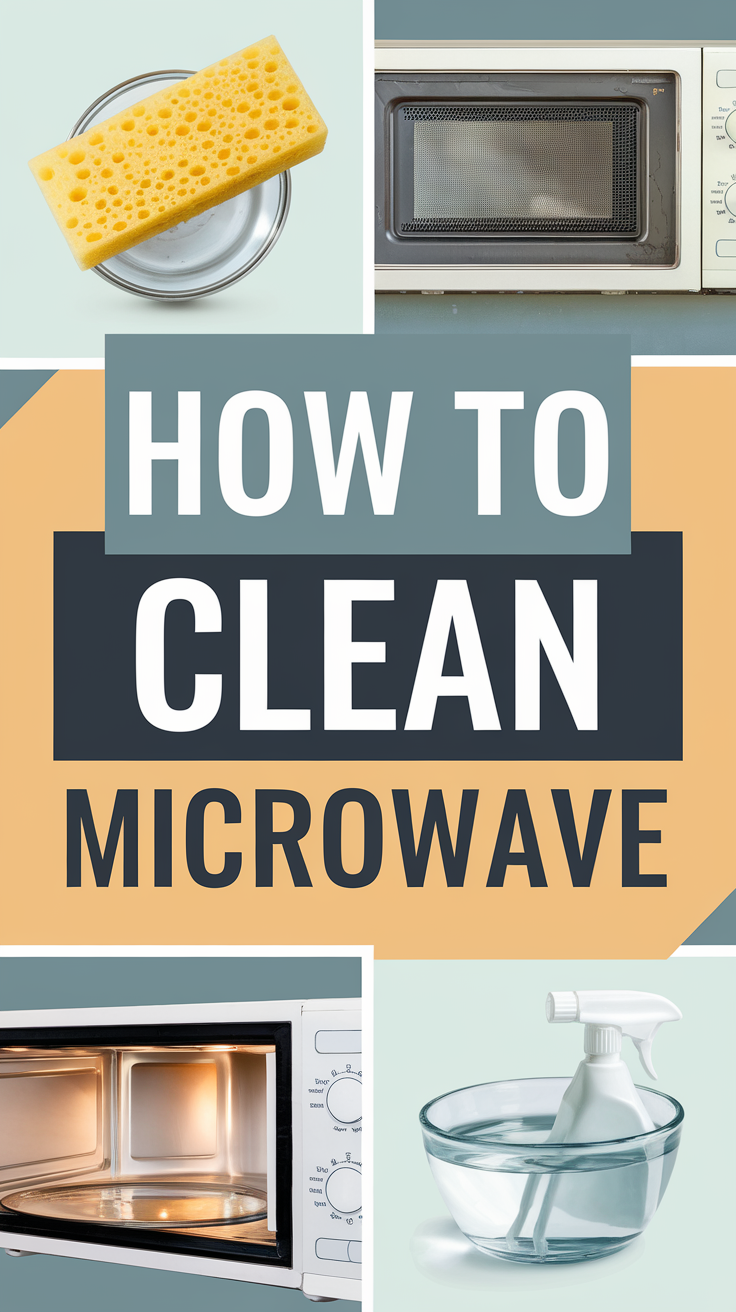How to Clean a Cast Iron Skillet
Did you know that properly cleaning your cast iron skillet can extend its lifespan for generations? In this article, we’ll guide you through the importance of maintaining this kitchen essential, the materials needed for cleaning, and a step-by-step process to tackle everything from stubborn stains to rust. By the end, you’ll be equipped with expert tips and avoid common pitfalls to ensure your skillet remains a reliable cooking companion for years to come.
Shop Our Must-Haves
Importance of Cleaning a Cast Iron Skillet
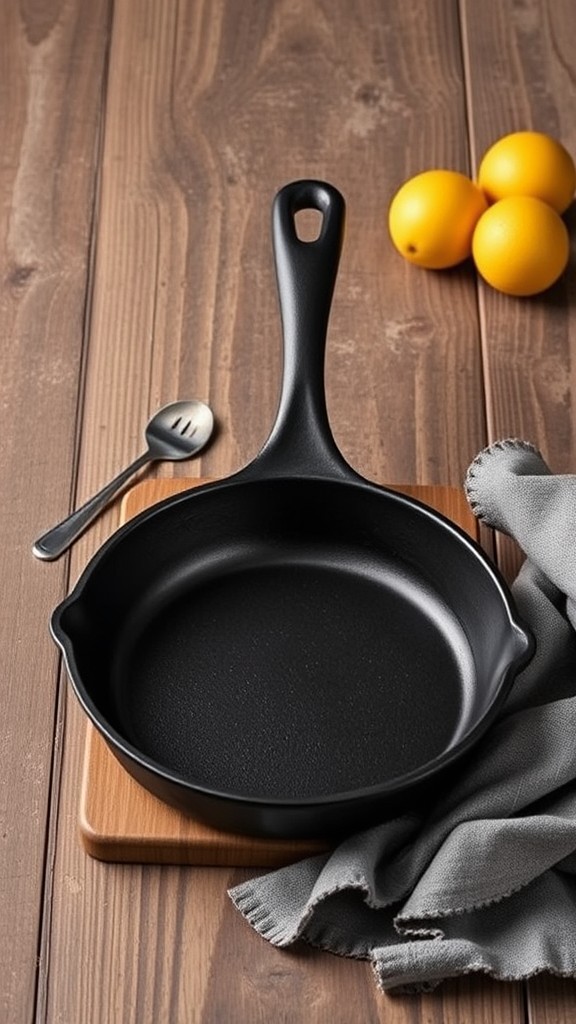
Cleaning a cast iron skillet is crucial for maintaining its longevity and performance. A well-cleaned skillet prevents rust and corrosion, which can ruin the seasoning and lead to unwanted flavors in your food. Regular cleaning ensures your skillet is ready for any dish, from searing steaks to baking cornbread.
Proper cleaning also maintains the non-stick surface that cast iron is renowned for. Using soap occasionally won’t harm a well-seasoned pan, but always remember to rinse thoroughly and dry immediately. To restore the skillet’s seasoning, apply a light coating of cooking oil after cleaning. This simple practice keeps your skillet in top cooking condition, enhancing its performance over time.
Materials Needed for Cleaning
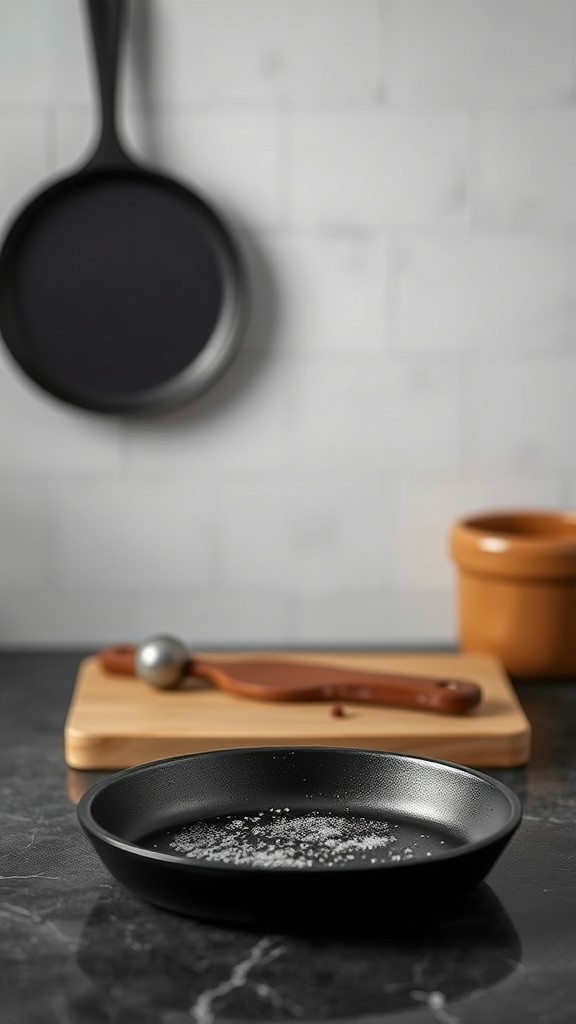
To effectively clean a cast iron skillet, gather these essential materials:
- Coarse salt: Acts as an abrasive scrubber.
- Cleaning cloths or paper towels: For drying and oiling the skillet.
- Vegetable oil or flaxseed oil: Used for seasoning the iron after cleaning.
- Plastic or wooden spatula: Helps in removing tough food residues without scratching.
Start by pouring some coarse salt into the skillet, then use a damp cloth or sponge to scrub it in a circular motion. This method helps eliminate stuck-on bits without damaging the seasoning. Once clean, rinse briefly with water and dry it thoroughly. Finally, apply a thin layer of oil to maintain its non-stick surface and prevent rust.
Step-by-Step Cleaning Process
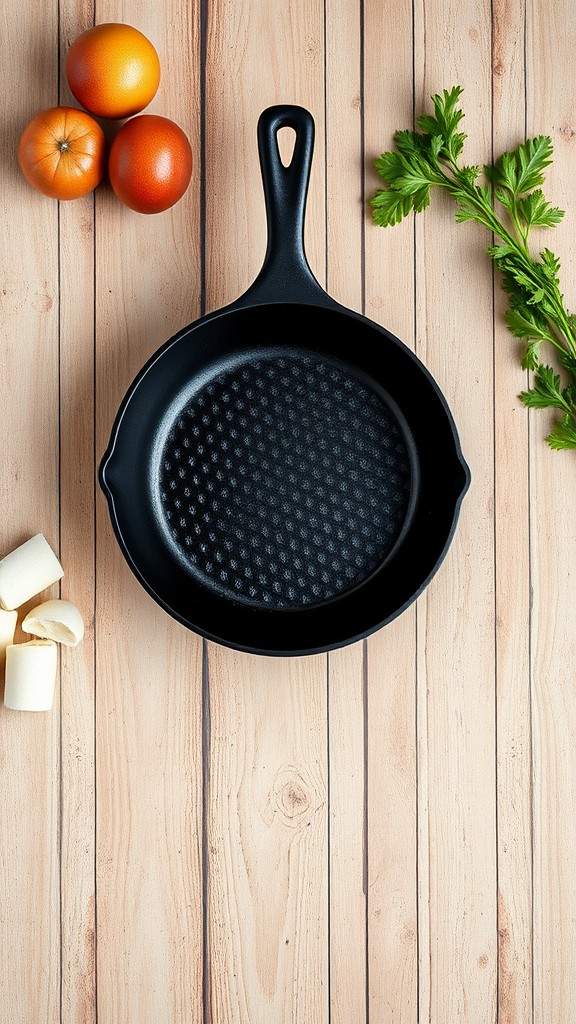
To clean your cast iron skillet effectively, follow these steps:
-
Cool Down: Allow the skillet to cool slightly after cooking. A hot pan can cause burns or injury.
-
Scrub: Use a non-metal brush or a spatula to remove any stuck-on food. For stubborn residue, a small amount of coarse salt can act as an abrasive without damaging the seasoning.
-
Rinse: Rinse your skillet under warm water. Avoid soaking, as this can lead to rust. If needed, use a little mild dish soap—though many pros avoid soap entirely.
-
Dry Thoroughly: Use a towel to completely dry your skillet. Leaving moisture can cause rust, so ensure it’s bone dry.
-
Re-oil: After drying, apply a thin layer of cooking oil to maintain the seasoning. Wipe off excess with a paper towel to keep it from becoming sticky.
Following this simple process will keep your skillet in great shape for years to come!
Dealing with Stubborn Stains and Rust
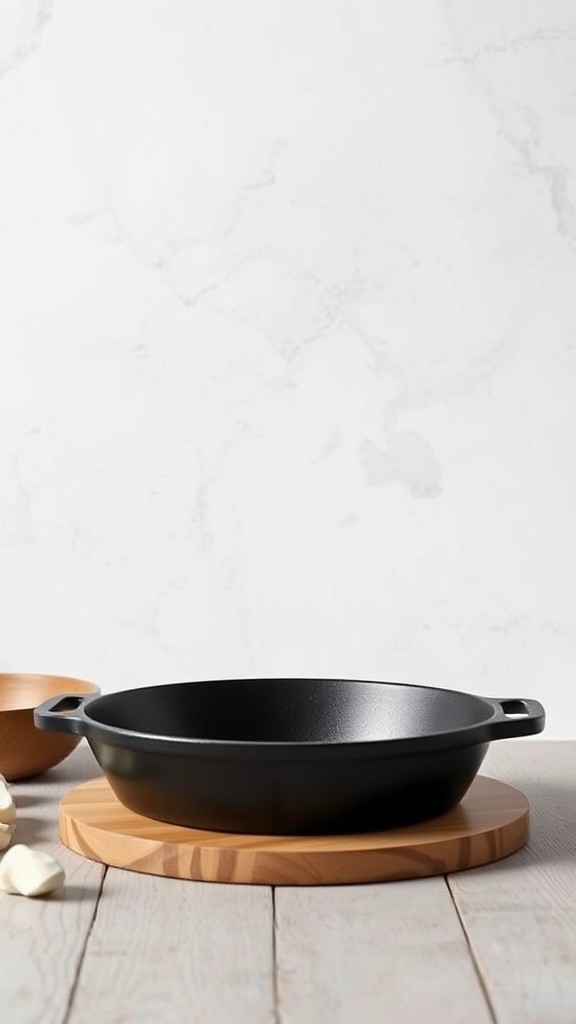
To tackle stubborn stains, begin by creating a paste from baking soda and water. Apply this paste to the stained areas and let it sit for about 15-20 minutes. Use a non-abrasive scrubber to gently work the paste into the stain, then rinse thoroughly. This process often lifts residue without damaging the skillet’s seasoning.
For rust spots, mix equal parts of white vinegar and water to soak the affected area for about 10 minutes. Using a soft brush, scrub the rust gently. Afterward, rinse and dry the skillet completely to prevent further rusting. Always apply a thin layer of oil after cleaning to maintain the skillet’s seasoning and protect it from moisture.
Drying and Seasoning Your Skillet
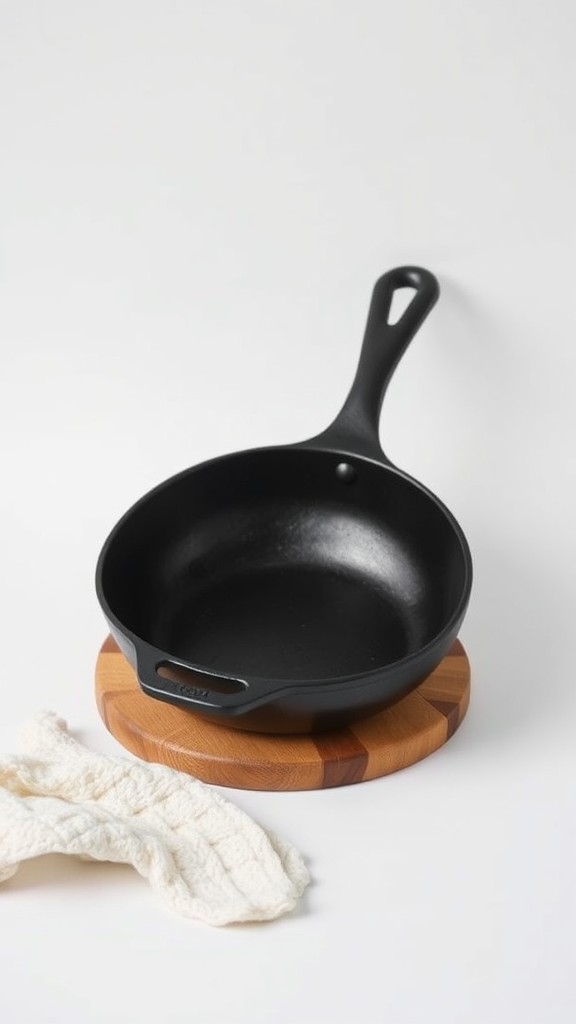
After cleaning your cast iron skillet, it’s essential to dry and season it to maintain its non-stick surface and prevent rust. Start by wiping the skillet with a clean, dry cloth or paper towel to remove any moisture. You can also place it on the stove over low heat for a few minutes to ensure it’s thoroughly dry.
To season the skillet, apply a thin layer of high smoke-point oil like canola, grapeseed, or flaxseed. Use a paper towel to spread the oil evenly across the entire surface, including the handle and outside. Heat the skillet upside down in the oven at 450°F (232°C) for about an hour. This creates a durable non-stick coating, enhancing both flavor and cooking performance during future uses.
Tips for Maintaining Your Cast Iron Skillet
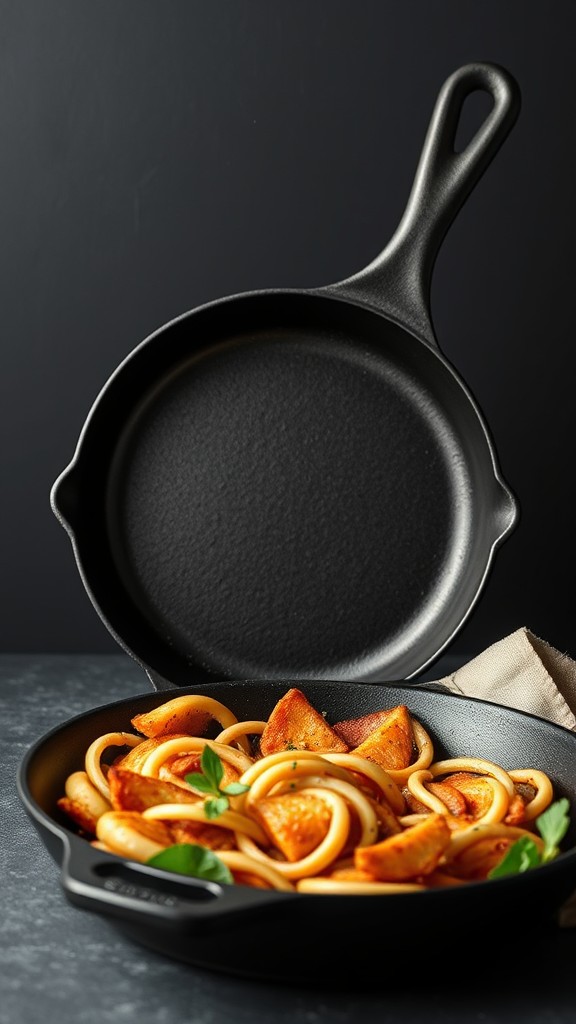
To maintain your cast iron skillet, focus on regular seasoning and proper cleaning techniques. After each use, avoid soaking your skillet in water. Instead, clean it immediately with hot water and a soft scrub brush or sponge. If there are stubborn bits of food, use coarse salt as a scrub to lift them off without damaging the seasoning.
After washing, ensure it’s completely dry to prevent rust. Heat it on low for a few minutes to evaporate any remaining moisture. Follow up by applying a thin layer of vegetable oil or flaxseed oil to maintain the seasoning. Store your skillet in a dry place with a paper towel inside to absorb moisture and protect its surface.
Common Mistakes to Avoid When Cleaning
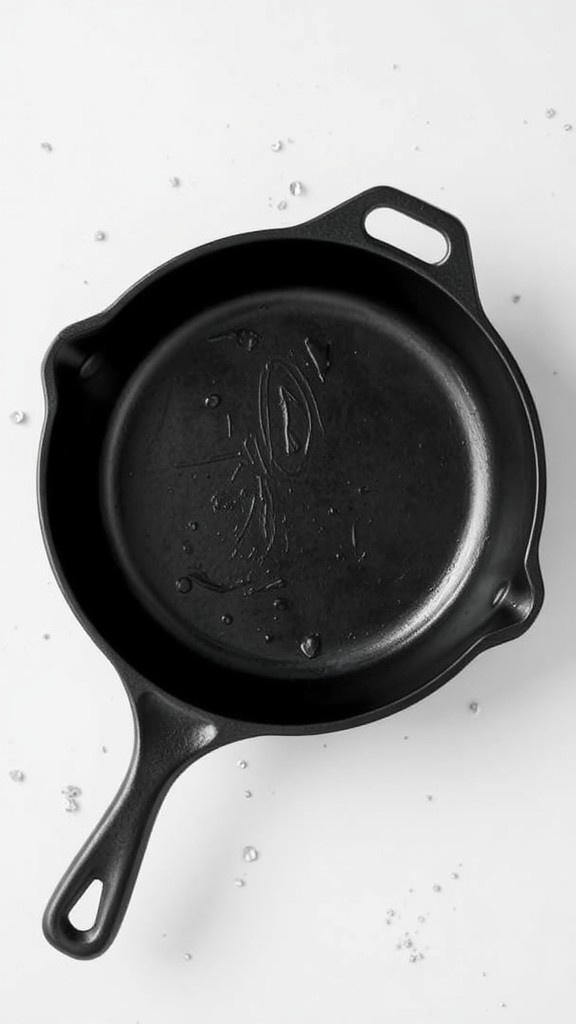
Avoiding common mistakes can ensure your cast iron skillet lasts a lifetime. One major error is using soap. Many believe that a little dish soap won’t harm the seasoning, but it can strip away the protective layer. Use hot water and a stiff brush or sponge instead.
Another mistake is not drying your skillet immediately after cleaning. Cast iron is prone to rust, so it’s crucial to thoroughly dry your skillet right away. You can place it on low heat for a few minutes to evaporate any remaining moisture.
Additionally, steering clear of abrupt temperature changes helps maintain the integrity of the skillet. Never move a hot skillet directly to a cold surface; this can cause cracking. Always allow it to cool gradually.
Alternative Methods for Specific Scenarios
For tough, burnt-on food, try a mixture of coarse salt and oil. Pour a generous amount of coarse salt into the skillet, add a couple of tablespoons of oil, and use a scrub pad to scrape away the residue. This method tackles stubborn spots while preserving the seasoning of your skillet.
For rusty skillets, start with a gentle scrub using fine steel wool or a rust eraser. Lightly scrub the affected areas until rust is gone, then wash with mild soap and dry thoroughly. Follow up by applying a thin layer of vegetable oil to restore the protective seasoning and prevent further rust formation.
For a lighter clean-up, boil water in the skillet. This technique loosens food residues, making wiping it down with a soft cloth easy and efficient. Always ensure the skillet is heated slowly to prevent thermal shock.







